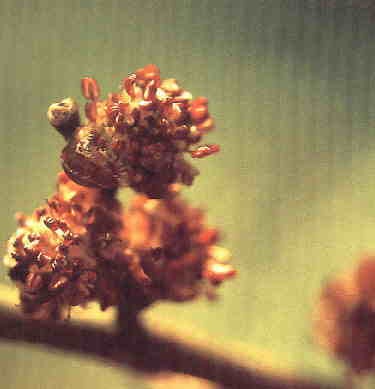"English elm "
(Ulmus minor)

Description
Ulmus procera is a species of Magnoliopsida described by Richard Anthony Salisbury. Ulmus procera belongs to the genus Ulmus, and the family Ulmaceae. Elms are deciduous and semi-deciduous trees comprising the flowering plant genus Ulmus in the plant family Ulmaceae. The genus first appeared in the Miocene geological period about 20 million years ago, originating in what is now central Asia. These trees flourished and spread over most of the Northern Hemisphere, inhabiting the temperate and tropical-montane regions of North America and Eurasia, presently ranging southward in the Middle East to Lebanon, and Israel, and across the Equator in the Far East into Indonesia. Elms are components of many kinds of natural forests. Moreover, during the 19th and early 20th centuries, many species and cultivars were also planted as ornamental street, garden, and park trees in Europe, North America, and parts of the Southern Hemisphere, notably Australasia. Some individual elms reached great size and age. However, in recent decades, most mature elms of European or North American origin have died from Dutch elm disease, caused by a microfungus dispersed by bark beetles. In response, disease-resistant cultivars have been developed, capable of restoring the elm to forestry and landscaping. There are about 30 to 40 species of Ulmus (elm); the ambiguity in number results from difficulty in delineating species, owing to the ease of hybridization between them and the development of local seed-sterile vegetatively propagated microspecies in some areas, mainly in the Ulmus field elm (Ulmus minor) group. Oliver Rackham describes Ulmus as the most critical genus in the entire British flora, adding that 'species and varieties are a distinction in the human mind rather than a measured degree of genetic variation'. The genus is hermaphroditic, having apetalous perfect flowers which are wind-pollinated. Elm leaves are alternate, with simple, single- or, most commonly, doubly serrate margins, usually asymmetric at the base and acuminate at the apex. The fruit is a round wind-dispersed samara flushed with chlorophyll, facilitating photosynthesis before the leaves emerge. The samarae are very light, those of British elms numbering around 50,000 to the pound (454 g). All species are tolerant of a wide range of soils and pH levels but, with few exceptions, demand good drainage. The elm tree can grow to great height, often with a forked trunk creating a vase profile.
Taxonomic tree:







